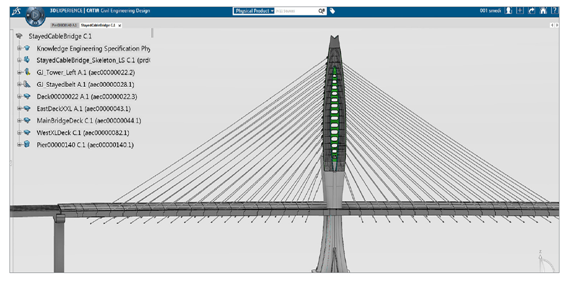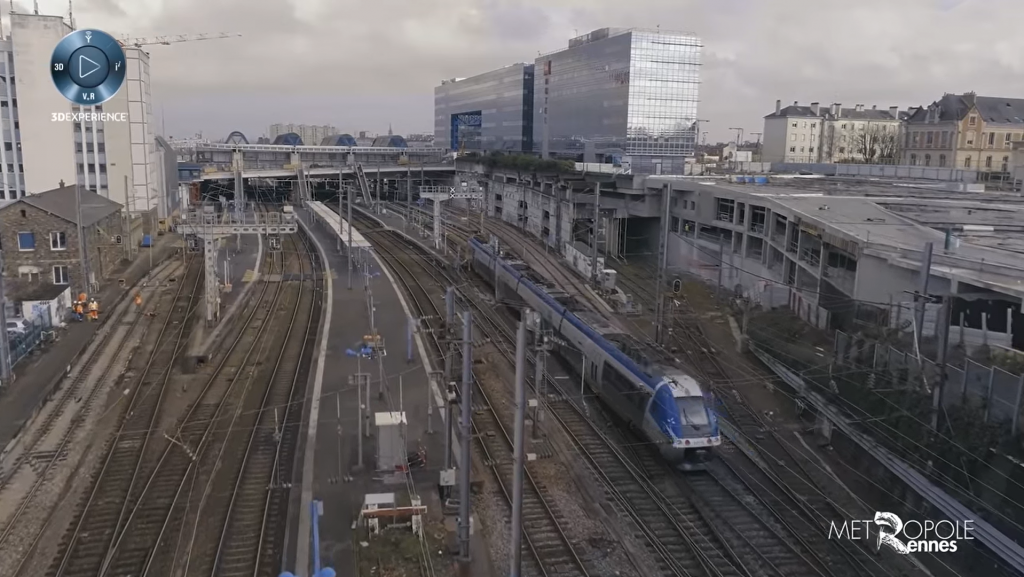We recently caught up with Simon Huffeteau, vice president for Construction, Cities and Territories at Dassault Systèmes, to discuss how cloud-based collaboration using virtual twin capability can enable cities to visualize, analyze and manage the complex decisions needed in response to the COVID-19 pandemic.
3DPerpsectives: Over the past five years or so, cities around the world have been developing “virtual twins” of their infrastructure and processes. Please tell us more about the technology and how it can support cities in their response to COVID-19.

Simon Huffeteau: Virtual twins are sophisticated computer models that allow cities to track thousands of parameters – ranging from the description of the existing assets of a city to information related to traffic, pollution or population. Virtual twins do not only gather data, they represent relevant and representative models of the physical world for collaborative decision-making purposes that are indeed real. With virtual twins, cities can run “what if” scenarios in the twin, allowing them to envision what will happen if they make a decision and receive feedback from multiple teams.
Our cloud-based collaboration platform, the 3DEXPERIENCE platform, supports complex decision-making using the virtual twin as a single source of truth for the city’s data. It can be used for domain-specific challenges like providing mobility services, managing waste or optimizing urban development, and for dedicated projects such as planning and developing a new hospital or transport hub. In both cases, the 3DEXPERIENCE platform facilitates the coordination and common understanding of the activities handled by multiple city departments and/or external stakeholders.
In this context, COVID-19 has underlined the need for fast, intelligent decision making and complex planning, both in the emergency response phase we’re currently living through and for building preparedness and resilience for the future.
3DP: How are these capabilities helping cities to coordinate their immediate response to COVID-19?
SH: Right now, the priority is not to solve the root cause of the crisis but to face its immediate consequences. Entire organizations have moved rapidly to working from home, and cities are using advanced collaboration software such as the 3DEXPERIENCE platform to support complex decisions, coordinate their response and keep vital services running.
In France, for instance, collaboration on the cloud is helping Rennes Métropole in the context of our Virtual Rennes project. They can track common projects supported by Virtual Rennes to perform their daily activities with minimum impact from COVID-19. Half of the users on Virtual Rennes’ collaboration platform are from the network of organizations and external stakeholders it regularly works with. All of them can collaborate as needed around its virtual twin and more users can be added as the needs evolve.
3DP: How can cities build resilience to future crises?
SH: Resilience will entail more than simply preventing the next COVID-19 crisis. It will be about building resilience overall, across multiple domains including the local economy, the built environment and the population.
Ultimately, municipalities need to ensure that their services can be delivered in the proper manner without creating a second wave of contamination. Every element, from how catering is handled in schools to the rules applied to protect citizens and employees on public transport, adds complexity to the city’s decision-making. Understanding what’s happening in the field – through a virtual twin of the city, a collaboration platform and the ability to gather analytics – is a critical entry point for making those decisions.
3DP: How will the built environment evolve in response to COVID-19, and how can collaboration using a virtual twin enable that evolution?
SH: We don’t yet know what lessons will be learned from the COVID-19 emergency, but we will see architects and urban designers thinking about how to include elements of epidemiology and demographic science in urban design and architecture. New types of project will emerge to ensure better air quality and resilience for city communities, possibly including other factors such as support for biodiversity. Using a virtual twin to model elements like the airflow around a building’s ventilation system, the flow of pollution outside its proposed location, and the impact of various materials on the surrounding environment will be a key enabler in this evolution. COVID-19 is the trigger but the changes will expand beyond the direct lessons learned of this crisis.

3DP: Citizens’ actions are vital to success in responding to emergencies like COVID-19. How can cities make sure they’re communicating effectively with citizens to prepare them for future emergencies?
SH: Elected representatives in cities are the very first line of “authority” that citizens have in front of us. They remain, in most countries, the most respected and trusted officials. Given this proximity, city authorities play a crucial role in preparing the population for future emergencies. To do that, they need to communicate vital information in a way that is relevant both to their citizens’ situation and to their feelings about their level of preparedness. This is about building a culture of resilience, making sure everyone, including future generations, understands what a pandemic situation is and how to respond with safety measures like the so-called “social distancing.”
An important first step is to capture the community’s sentiments, for example, by monitoring and understanding trends in online discussions and hashtags. The city can then craft its messages to match citizens’ concerns and speak to them on an appropriate level, in the right context. The 3DEXPERIENCE platform supports this essential communication, enabling the organization to follow trends, manage projects, share and discuss ideas and create dashboards to monitor their communication campaigns. It also enables them to create powerful visuals and models to bring home key messages and developments to citizens.
3DP: How can cities use virtual twin technology to continue improving their response to emergencies like COVID-19?
SH: In the next few years, we will see cities analyzing some of the best practices developed by mature organizations in sectors such as utilities and applying that knowledge to their own planning. Utilities providers and other essential organizations have planned their response to emergency situations by creating models of the decision-making process – the chain of command – and any external factors that might impact it. By analyzing those elements, they gain a scientific understanding of how the chain of command can be maintained in any situation. This approach fits well for cities because decision making for a city is itself a complex system of complex systems, and it needs to keep functioning no matter what crisis occurs.
Ultimately, technology doesn’t solve issues – people do. Improving disaster response and building resilience is about helping different groups of people to work together, and that is what the 3DEXPERIENCE platform does. By being able to add new stakeholders and types of organization to the platform that weren’t previously a part of its virtual twin projects, the city can bring new ideas and expertise to its understanding of emergency response and preparedness.


